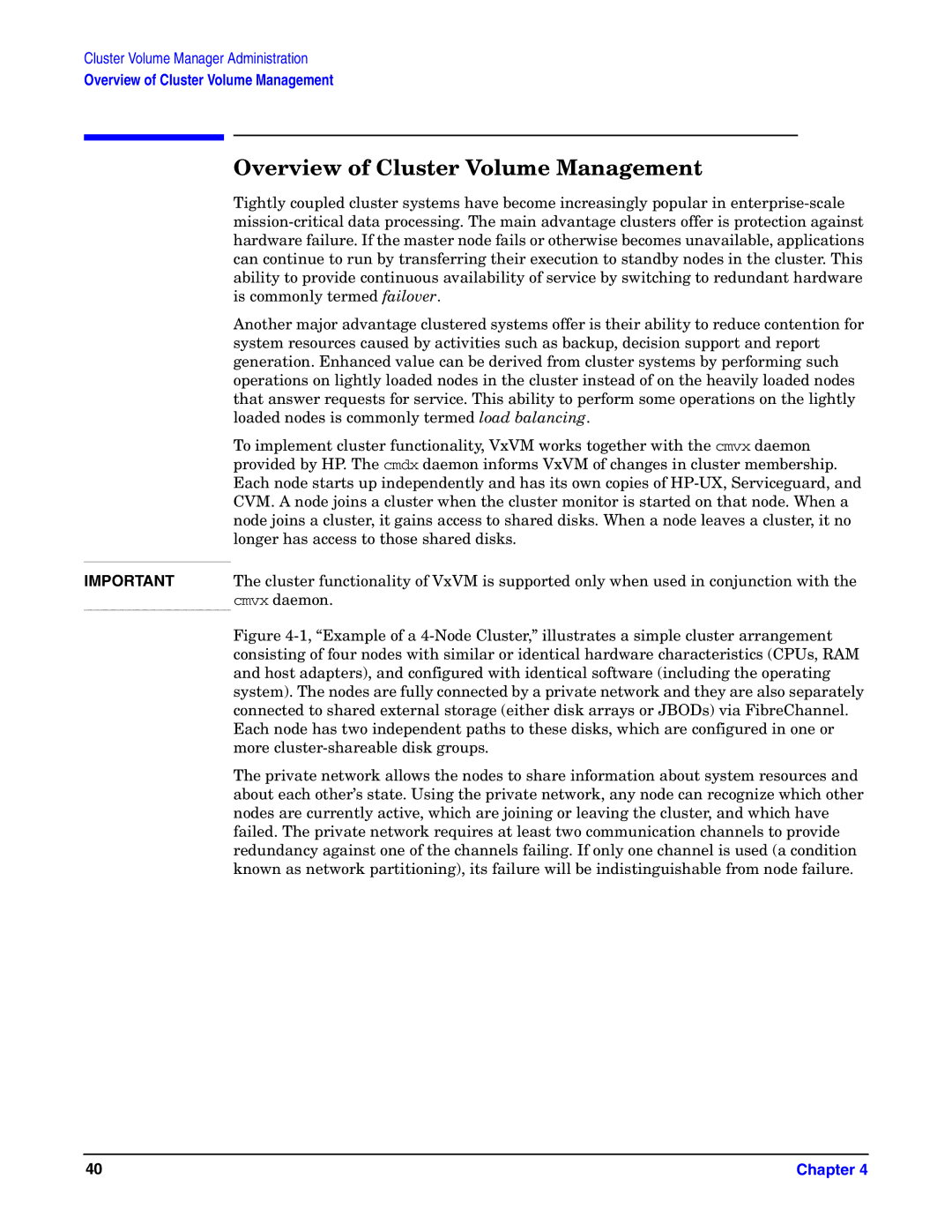
Cluster Volume Manager Administration
Overview of Cluster Volume Management
| Overview of Cluster Volume Management |
| Tightly coupled cluster systems have become increasingly popular in |
| |
| hardware failure. If the master node fails or otherwise becomes unavailable, applications |
| can continue to run by transferring their execution to standby nodes in the cluster. This |
| ability to provide continuous availability of service by switching to redundant hardware |
| is commonly termed failover. |
| Another major advantage clustered systems offer is their ability to reduce contention for |
| system resources caused by activities such as backup, decision support and report |
| generation. Enhanced value can be derived from cluster systems by performing such |
| operations on lightly loaded nodes in the cluster instead of on the heavily loaded nodes |
| that answer requests for service. This ability to perform some operations on the lightly |
| loaded nodes is commonly termed load balancing. |
| To implement cluster functionality, VxVM works together with the cmvx daemon |
| provided by HP. The cmdx daemon informs VxVM of changes in cluster membership. |
| Each node starts up independently and has its own copies of |
| CVM. A node joins a cluster when the cluster monitor is started on that node. When a |
| node joins a cluster, it gains access to shared disks. When a node leaves a cluster, it no |
| longer has access to those shared disks. |
|
|
IMPORTANT | The cluster functionality of VxVM is supported only when used in conjunction with the |
| cmvx daemon. |
| Figure |
| consisting of four nodes with similar or identical hardware characteristics (CPUs, RAM |
| and host adapters), and configured with identical software (including the operating |
| system). The nodes are fully connected by a private network and they are also separately |
| connected to shared external storage (either disk arrays or JBODs) via FibreChannel. |
| Each node has two independent paths to these disks, which are configured in one or |
| more |
| The private network allows the nodes to share information about system resources and |
| about each other’s state. Using the private network, any node can recognize which other |
| nodes are currently active, which are joining or leaving the cluster, and which have |
| failed. The private network requires at least two communication channels to provide |
| redundancy against one of the channels failing. If only one channel is used (a condition |
| known as network partitioning), its failure will be indistinguishable from node failure. |
40 | Chapter 4 |
